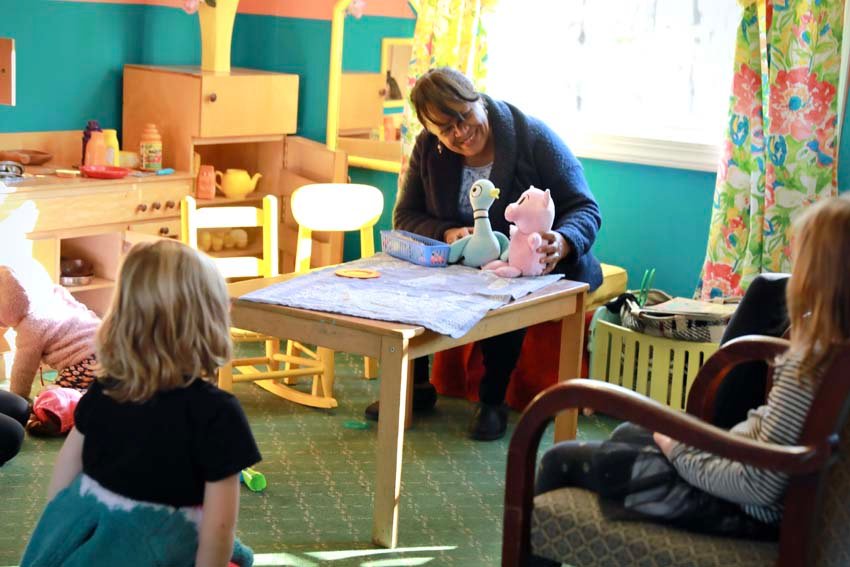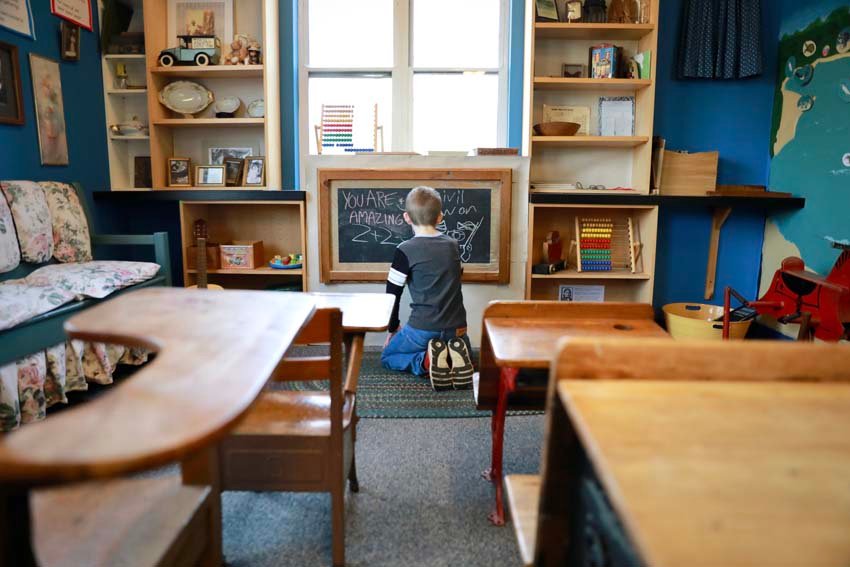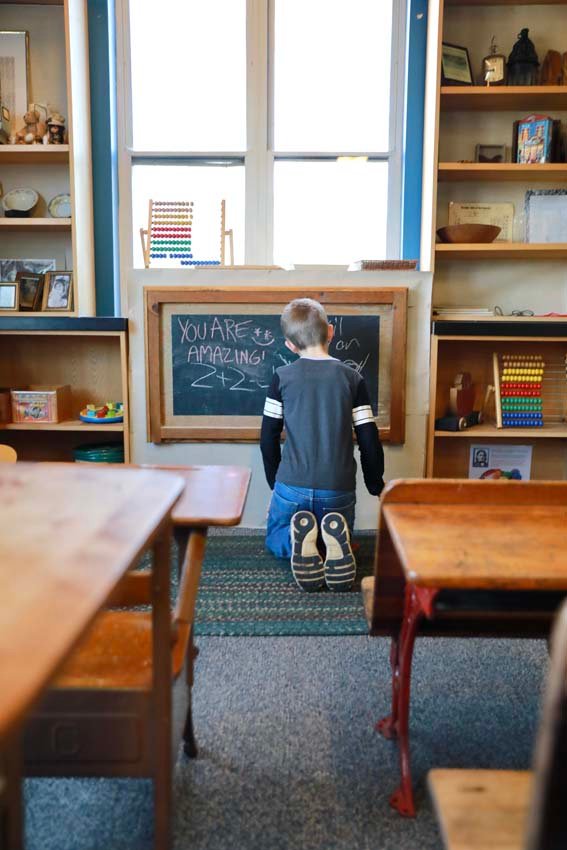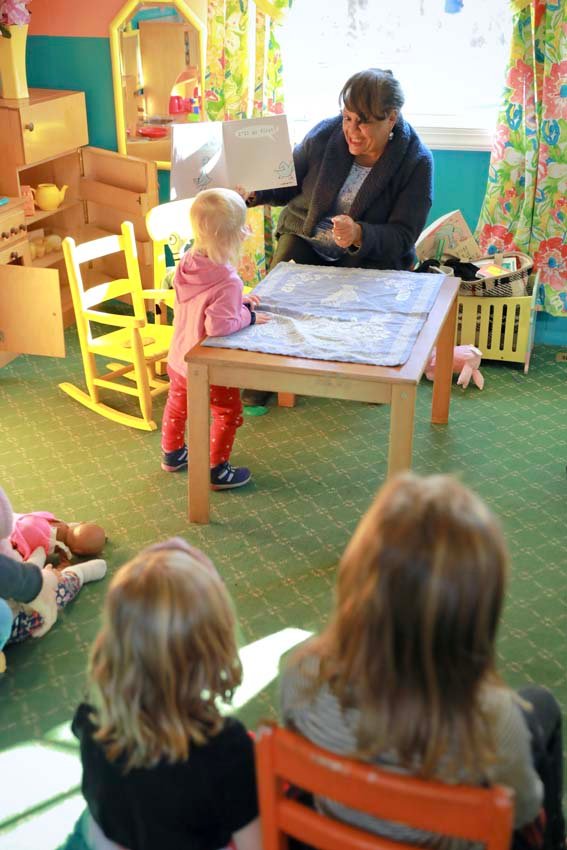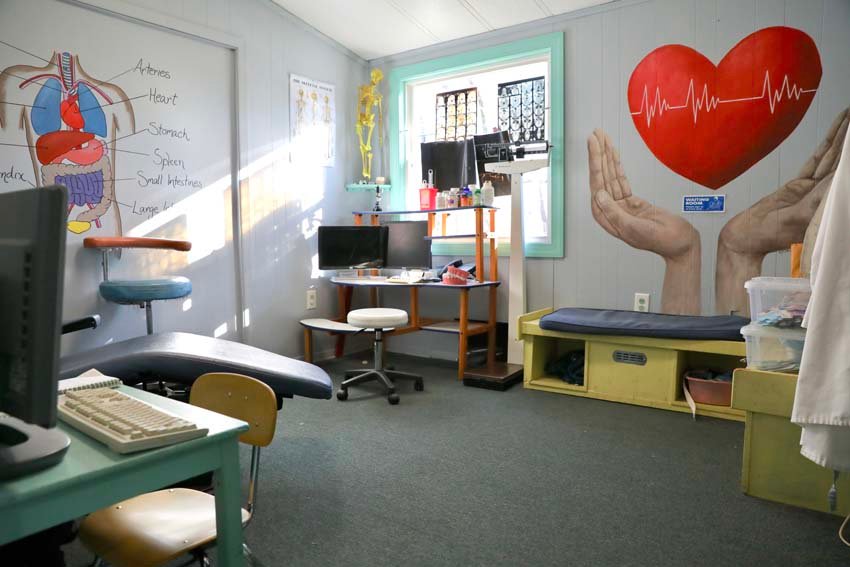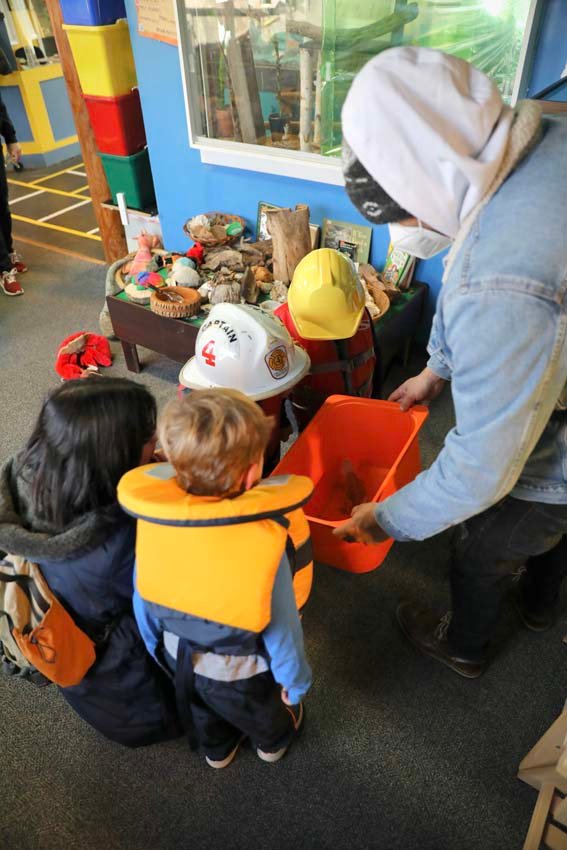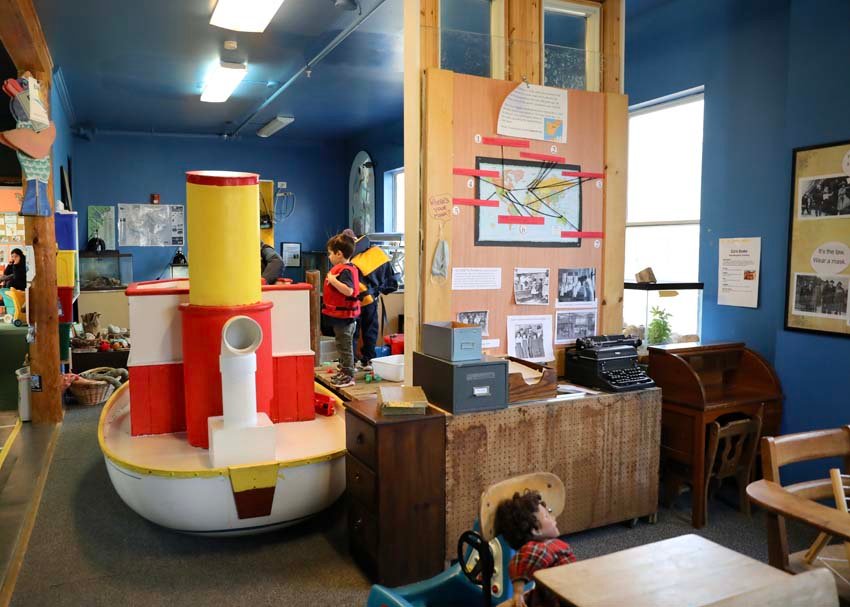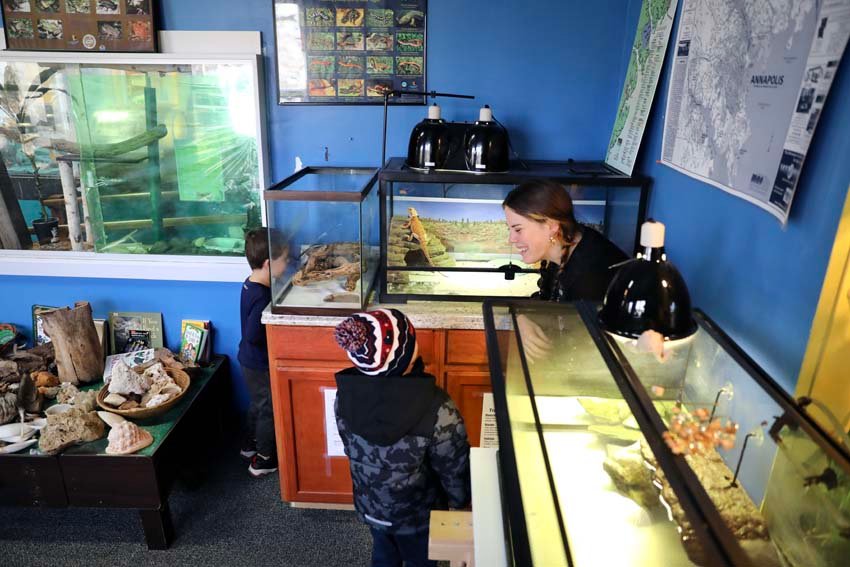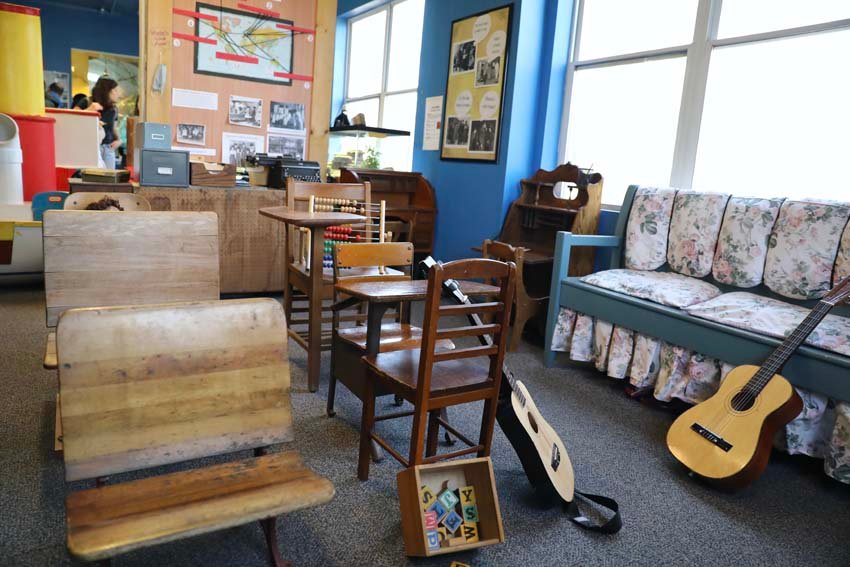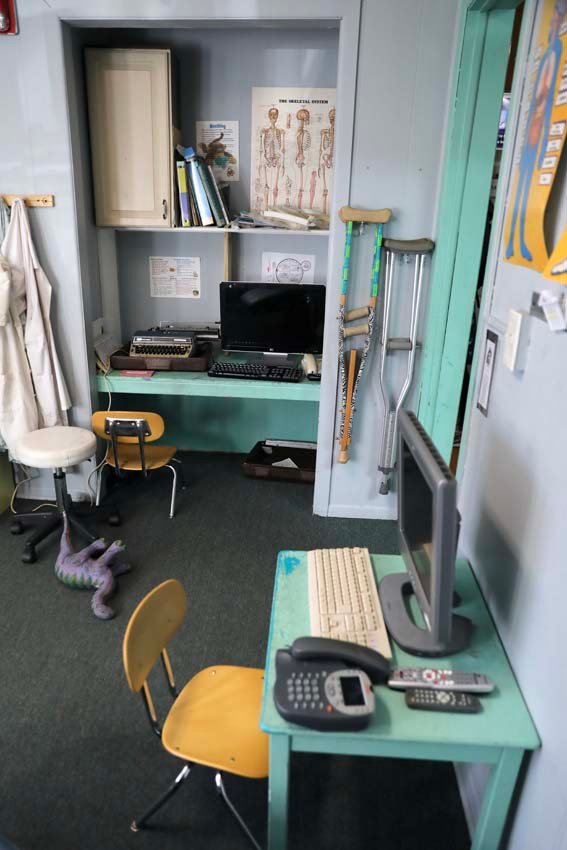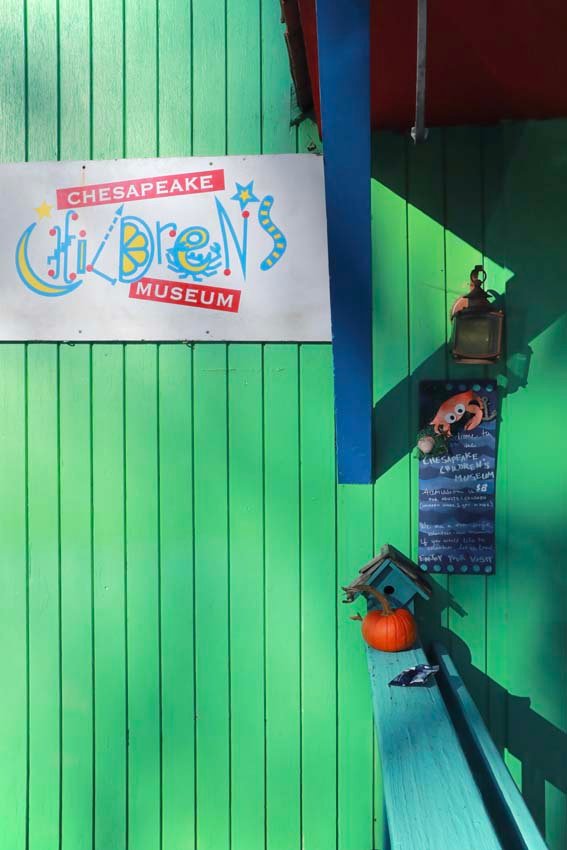+ By MacDuff Perkins + Photos by Karen Davies
There is a story about a father and his small daughter. One day, he feels that she is constantly underfoot. He sits at his desk and tries to get work done; she tugs at his elbows. He takes a telephone call; she pulls at his pant leg. In the kitchen, while he’s making lunch, she holds tight to his thigh so that he can’t move. Finally, exasperated, he says, “Honey, what on earth are you doing down there?”
The little girl looks up at him and replies, “Daddy, I live down here.”
This story is a reminder that children do not exist in the world of adults, no matter how much we sometimes wish that they could. And no one understands this more than Debbie Wood, the founder of Chesapeake Children’s Museum, a quiet haven for small humans and their minders.
“I’ve been a child all my life,” says Wood, the second of five children. Wood’s father passed away at a young age, leaving her mother, an early childhood professional, to create an environment that fostered creativity and self-expression amid the trauma of losing a parent. “I became her assistant,” she says.
By the time Wood was old enough for overnights with her Brownie troop, she knew she had a knack for organizing activities for her peers. “I would naturally fill the spaces between—‘This is a great time for a game! This is a great time for a song!’” Her troop leaders loved her.
Wood wasn’t forcing her enthusiasm for play. She later pursued a bachelor’s degree in early childhood education and married young, structuring her life around the well-known balance of contributing toward the household income while being the best mother possible. But she didn’t feel the support she needed. A preschool teacher working two other full-time jobs, she was exhausted when it came time to parent. “I felt there wasn’t a place I could go with my little ones,” she says. “Libraries aren’t what they are now. People would look at me like I was being rude to not have a sitter.”
A trip to the newly opened Capital Children’s Museum (now the National Children’s Museum) in Northwest Washington, DC changed everything. Wood, along with her two-year-old and her mother, were attending the museum to see if it would be a good place for a field trip for her preschool class. “We had so much fun,” she says. “I didn’t have to say ‘no’ to my child. It was a place of discovery, of play, and of adult-child connection.”
This was the spark that set the fire ablaze. Wood began to actively research children’s museums, beginning with the first one, in Brooklyn, New York, established in 1899. She learned that more children’s museums had opened during the Great Depression, when mothers needed a place to bring their children to escape hardship at home. Children’s museums addressed the issues surrounding the lack of safety in public parks. As Wood pursued her own higher education in counseling, she began to see the significant role that children’s museums played in communities.
It took several years of incubating for Wood’s idea to start taking shape. “My kids were 10 and 13. They could feed and dress themselves, so it was time for me to dig in,” she says. She put an ad in the Capital Gazette and immediately received 20 phone calls. “I had the same idea!” people told her. Parents were tired of telling their children to be still and quiet—it obviously did not work; children want space to explore and be unconstrained.
Wood held a public meeting, and a dozen people showed up. They started meeting once a month, discussing what they needed to bring the vision to life. “It was like building a bicycle while you’re riding it,” she says.
The Chesapeake Children’s Museum was born from the love of many parents. It found its first home at Odenton Elementary School, and six months later, it moved into the Festival at Riva, which promised a spot as long as there was a free space. After five years, the museum moved to the Eastport Shopping Center, then temporarily to Eastport Elementary School. Despite the many moves, its supporting community was growing.
Tired of endlessly moving, Wood began a quest for a permanent home. She received a hint about a possible space, an old building that was currently being used as a storage facility and needed a new tenant. Owned by the city of Annapolis, the building that previously housed the radio station WRYE is surrounded by 5.5 acres of city parks, including a nature trail along the headwaters of Spa Creek. The space offered everything needed for a great children’s museum. Wood was interested.
Desperately out of date, the building needed help. Permits were required to bring it up to code. Wood met with the mayor, city council, and dozens of inspectors. The city was ready to raze the building, but Wood offered the option to refurbish it. Her home-improvement skills were honed, as well as her volunteer organizing abilities. An eleventh-hour grant came in as the bank account had just nickels in it, pushing the effort over the finish line. Doors to the Chesapeake Children’s Museum opened in November 2002.
Today, over 20 years later, the museum is a place of wonder. Walking in the doors, one hears the space filled with voices of children and adults. Tanks of fish and turtles are surrounded by small faces, and a stage area allows for dramatic interpretations and puppet shows. At an arts-and-crafts table, children mix paint and squeal with delight when they realize that blue and yellow make green. School groups roam throughout the outdoor grounds, exploring the flora and fauna of the nature trails. Inside, on adult-sized furniture, caregivers work at laptop computers while children haggle in a marketplace of wooden apples, trucks, and dolls. English and Spanish are spoken, as well as unfettered, preverbal babble.
Two fathers stand at opposite ends of the room, watching their toddlers playing together on a carpet. Gradually, the men move closer together, until they’re standing side by side, making small talk and discussing their children and their lives. These are the types of moments that make Wood excited—when the museum provides an essential meeting ground for parents.
“The word matressance means becoming a mother. Patressance means becoming a father. These are new words. And it’s a new world we come into as an adult,” Wood explains of her approach to allowing parents to be themselves rather than the idealized version of themselves in the museum.
She leaves a conversation with a caregiver and lifts a basket of random toys, walks around the main room, and puts toys on the floor instead of tucking them away neatly in hidden cubbies. “I want the children to find them and explore them,” she says. “They can’t experience them if they can’t reach them.”
After all, children live down there.
For more information,
visit theccm.org.

